Ouvrage Sainte-Agnès
Useful Information
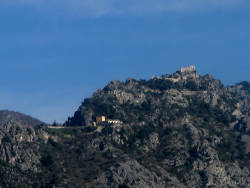
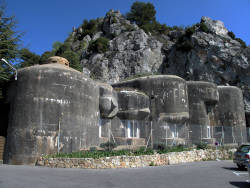
| Location: |
1 Pl. du Fort, 06500 Ste Agnès, France.
Follow Avenue du Château through 06500 Ste Agnès to the parking lot, the entrance is right at the parking lot. (43.799153, 7.462431) |
| Open: |
FEB to SEP Wed-Sun 10:30, 14:30, 16. OCT to JAN Sat, Sun 10:30, 14:30, 16. [2023] |
| Fee: |
Adults EUR 6, Children (4-14) EUR 3. Groups (20+): Adults EUR 4. [2023] |
| Classification: |
 World War II Bunker World War II Bunker
 Ligne Maginot Ligne Maginot
|
| Light: |
 Electric Light Electric Light
|
| Dimension: | A=780 m asl. |
| Guided tours: | D=90 min, Max=20 |
| Photography: | allowed |
| Accessibility: | no |
| Bibliography: | |
| Address: |
Ouvrage Sainte-Agnès, 1 Pl. du Fort, 06500 Ste Agnès, Tel: +33-493-35-84-58.
E-mail: |
| As far as we know this information was accurate when it was published (see years in brackets), but may have changed since then. Please check rates and details directly with the companies in question if you need more recent info. |
|
History
| NOV-1931 | beginning of construction. |
| OCT-1934 | completed. |
| JUN-1940 | fort helped to repel the Italians. |
Description
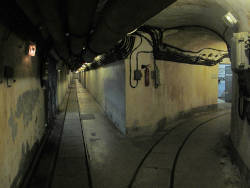
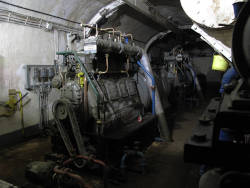
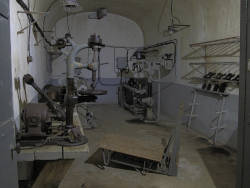
Ouvrage Sainte-Agnès is a part of the Maginot Line, or better its Alpine extension, the Alpine Line, also called the Little Maginot Line. The modern fortification was built into the mountain below a Medieval castle. Like the castle, it is at a strategic location between the France and Italy, almost 800 m high, close to the sea, and close to Italy, 3 km as the crow flies. It had four levels and was covered by more than 55 m of rock. The galleries off an area of about 2000 m². It was equipped with running water and a sewage system, electricity and air conditioning. At that time this was not normal, the nearby village Sainte-Agnès only had running water and sewerage in 1960. On the other hand, all those system were necessary to operate an underground bunker for a longer period. The Fort could accommodate 350 troops who could live here in complete self-sufficiency for 3 months.
The ouvrage had one entry block, two artillery blocks, two infantry blocks and one observation block facing Italy. Ten observation posts reported to bunker.
When Italian troops were advancing along the coast during the Italian offensive of 1940, the fort fired 1,201 rounds from the 75 mm guns, 80 from 81 mm mortars, and 234 from 135 mm guns. It fired on the coastal roads on 21 June, and on the Col du Razet the next day. On 23 June Block 3 fired again against infiltrators around Scuvion and Pierre-Pontue, and later at Menton.
This fort, unlike the many forts of the French-German Maginot line was not abandoned after World War II. It was maintained by the French army until 1990. With the end of the Cold War it was decommissioned and transferred to the town of Sainte-Agnès. It was transformed into a historic museum and opened to the public.
 Search DuckDuckGo for "Ouvrage Sainte-Agnès"
Search DuckDuckGo for "Ouvrage Sainte-Agnès" Google Earth Placemark
Google Earth Placemark OpenStreetMap
OpenStreetMap Ouvrage Sainte-Agnès - Wikipedia (visited: 05-NOV-2023)
Ouvrage Sainte-Agnès - Wikipedia (visited: 05-NOV-2023) Fort de la Ligne Maginot : Des moments… forts ! official website (visited: 05-NOV-2023)
Fort de la Ligne Maginot : Des moments… forts ! official website (visited: 05-NOV-2023) Index
Index Hierarchical
Hierarchical Countries
Countries Maps
Maps